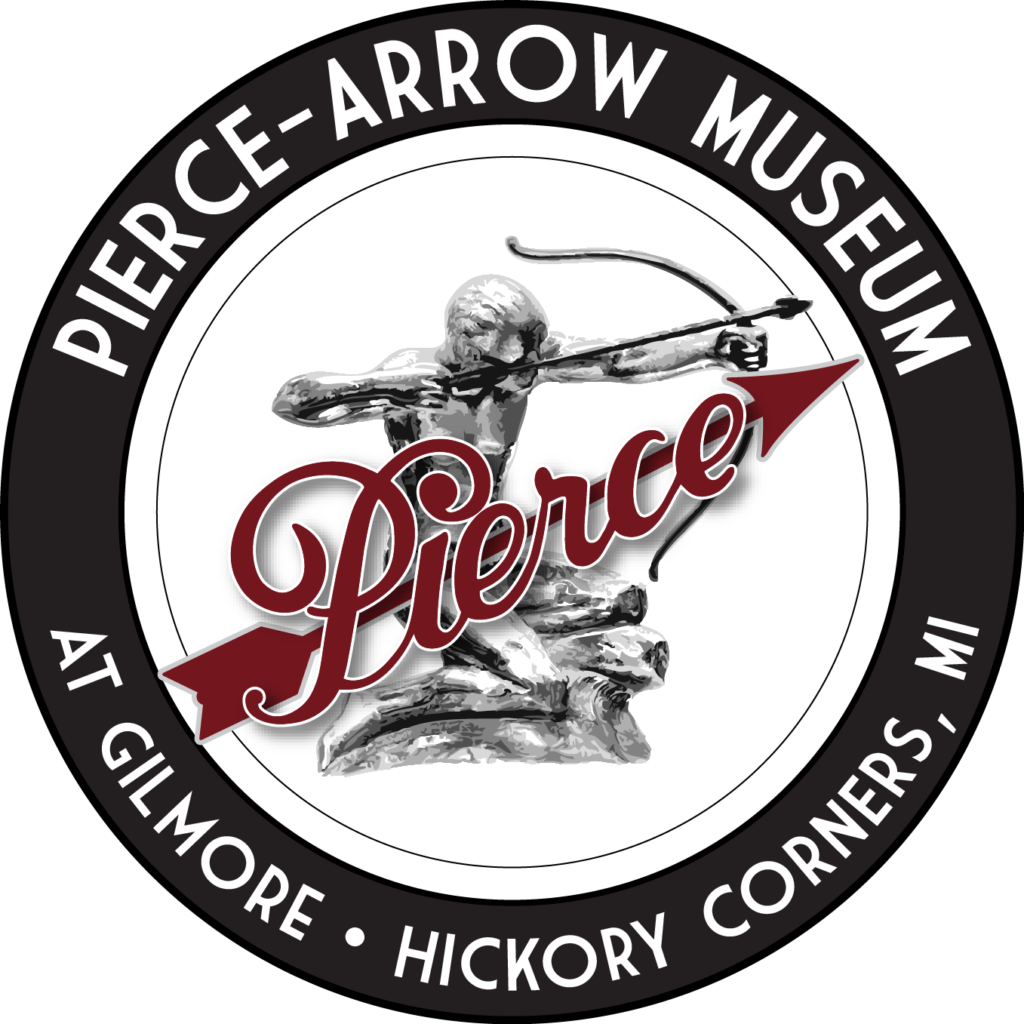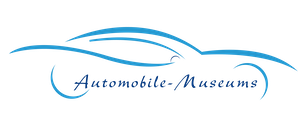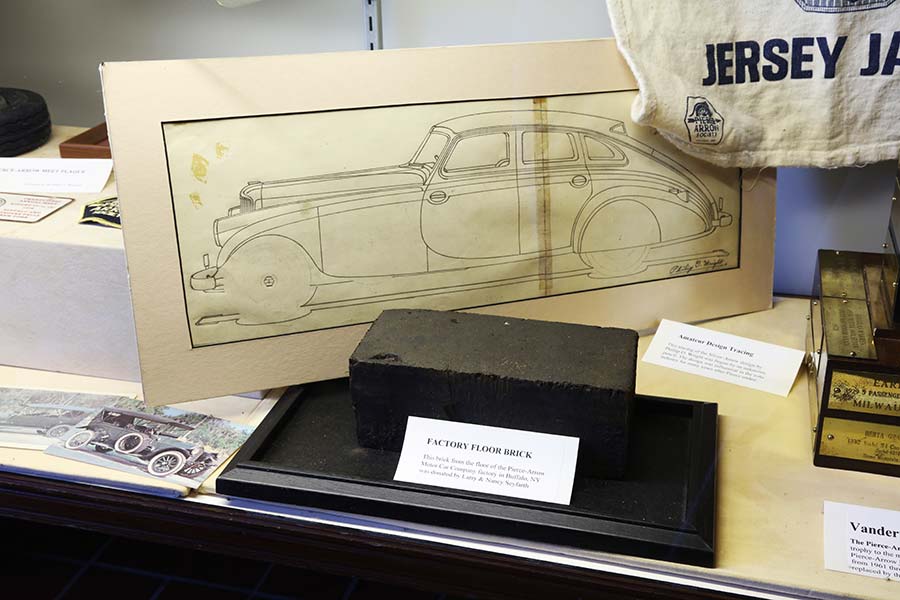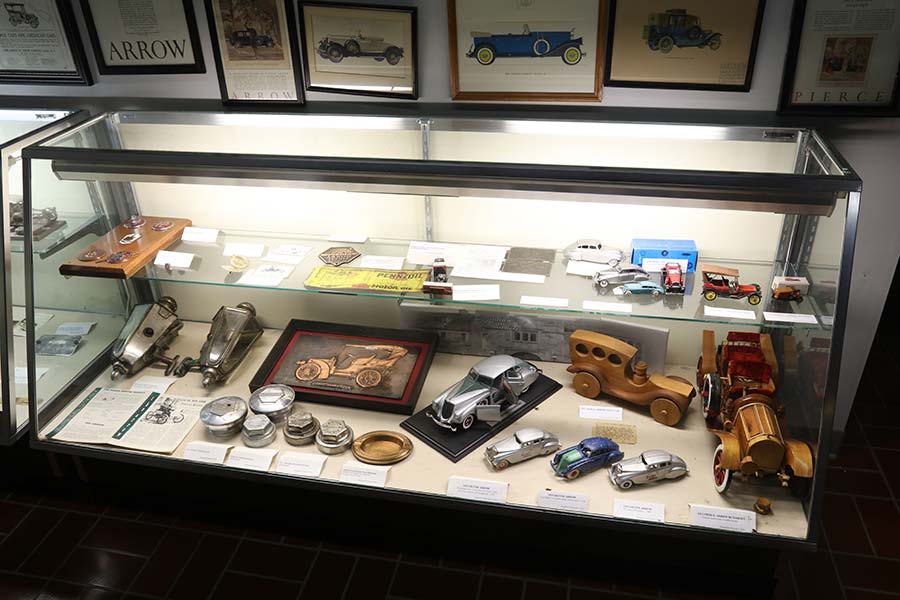
The Pierce-Arrow Museum, managed by the Pierce-Arrow Foundation, is located in an annex building on the Gilmore Car Museum campus in Hickory Corners, Michigan. The Pierce-Arrow Foundation was established in 1999 to create a museum dedicated solely to preserving the history and products of the Pierce-Arrow brand. For 37 years, from 1901 to 1938, Pierce-Arrow produced some of the most prestigious automobiles made in the United States. Pierce-Arrow was the favorite luxury automobile of the Presidents of the United States from William Howard Taft in 1908 to Franklin D. Roosevelt in 1933, as well as many movie stars.
Luxurious, the Pierce-Arrows were also innovative automobiles, both in style and technology. For example, their headlights mounted on the wings (and not on either side of the radiator) distinguished them from other productions. This arrangement patented by Pierce-Arrow in 1914 did not appear on any other car until Pierce-Arrow ceased production in 1938. Note that there is another Pierce-Arrow Museum, located in Buffalo, New York, where the Pierce-Arrow headquarters and factory were located.



Cars at the Pierce-Arrow Museum
The Pierce-Arrow Museum exhibits about twenty cars, dating from 1903 to 1937. The majority of vehicles belong to the Foundation or are on permanent loan. A few cars loaned by the owners are rotated to offer variety each year. Naturally, the Pierce-Arrow Foundation also seeks to enrich its collection, notably through donations from owners, in order to present the most complete possible panorama of the Pierce-Arrow production. If most of the cars have been restored to their original condition to show the high level of Pierce-Arrow quality, some vehicles are exposed in their condition, which shows how well the Pierce-Arrows have resisted 100 after leaving the factory for some. Luxury cars, so rare and expensive, the models presented are all exceptional.




The 1903 Stanhope is the oldest in the collection and is distinguished by its folding front seat, to improve the visibility of the driver sitting in the rear seat. The 1927 Model 80 “Town Car” is unique in this body, while Pierce Arrow Model 41 from 1931 was produced in only 6 copies bodied in “Club Sedan” by LeBaron. Two other models are very representative of these large luxury convertible sedans of the 1930s, the Model 42 Dual Cowl Phaeton of 1931 and the Model 54 Convertible Sedan of 1932 with a V12 engine. Let’s also mention this Model 48 Roadster 1909, which remained the property of the same family from its release in 1909 to its entry into the museum in 2020. Finally, a truck from 1917 recalls that Pierce-Arrow also produced famous trucks.



Next to the cars
Pierce-Arrow also manufactured bicycles, then motorcycles under the Pierce brand after separation of the automotive and 2-wheel activities. Some models are presented, such as this bike from 1899 or this 4-cylinder motorcycle from 1912. The Pierce-Arrow Museum displays many objects related to the design, development or production of Pierce-Arrow models. There are also engines and other car parts, allowing for a closer look at components that can rarely be detailed since they are under the hood or chassis. For his advertisements, often full-page magazines, Pierce-Arrow called on renowned artists for sophisticated paintings illustrating his models. Many of these advertisements and artworks, as well as historic photos decorate the walls of the museum.




Practical information
Website: https://pierce-arrowmuseum.org/
Opening
| April 1 to November 30 | |
| Monday – Friday | 9:00 – 17:00 |
| Saturday and Sunday | 9:00 – 18:00 |
| The museum is closed at Easter and Thanksgiving |
Rates
| Included in the entrance fee to the Gilmore Automobile Museum | |
| Adults | $16.00 |
| Youth (11 to 17 years) | $ 11.00 |
| Children (under 11 years) | Free |
| Active military personnel | Free |
| Ticket 2 consecutive days | $ 28,00 |
| Free parking |
The photos on this page belong to the Pierce-Arrow Museum
Discover more automobile Museums around the world…





